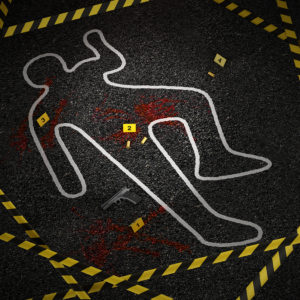Sometimes, studies can be analytical reminders of our day-to-day reality.
Realities that are more jolts than statistics.
“The Trace,” a media publication that focuses solely on U.S. gun violence, recently provided that lightning strike. It published key findings from national studies featured last week at a media and mass shootings summit that was sponsored by the Columbia Journalism Review and the school’s Dart Center for Journalism and Trauma project.
Overall, the summit panelists focused on:
-The need for the media to broaden its scope and not simply cover mass shootings that fit a predetermined narrative or grid,
-The need to increase media literacy regarding guns, violence, and citations of statistics used for text and broadcast presentations,
-The need to focus on tragic events in Black and Hispanic communities,
-The need for more investigative coverage and less sensationalistic coverage,
-The need to underscore the grass-roots violence-interrupter communities, especially those in major cities.
Jessica Beard, a trauma surgeon affiliated with the Philadelphia Center for Gun Violence Reporting, offered this insight during the panel: “The media are telling us whose lives matter. Half the time there is nothing there for shooting victims in Philadelphia.“
OK, let’s translate that observation into real terms: Most of the shooting and homicide victims in Philadelphia, much like other major U.S. cities, are Black. Therefore, the coverage isn’t as intense in contrast to White victims.
Through the years, we’ve noticed trends, especially driven by the Big Three cable news networks — CNN, FOX News Channel, and MSNBC. They set the tone for what’s hot and what’s not.
Usually, if a Black shooting victim is the subject of the national airwaves, the situation involves one of three scenarios:
-The person is shot by a police officer, usually under questionable or suspicious circumstances, and preferably White, with the latest controversy involving 20-year-old Daunte Wright, who was shot by an officer during a traffic stop Sunday afternoon in Brooklyn Center, Minn., just outside Minneapolis, sparking protests and use of tear gas,
-The person is involved in a case related to some type of racial animus,
-The person is a celebrity or associated with one.
Contrast that with another horrific event on March 14, 2021. Two people were killed and 13 wounded in a gang-related incident during a house party on the South Side of Chicago. Rayneesha Dotson, 30 years old, and Lionel Darling, 39, were the homicide victims.
How many of us remember that tragedy?
Black victims, Black perpetrators with gang ties in a high-crime metropolis like the Windy City.
Sorry, those elements don’t fit the national media narrative for visual display or written text, mainly because Black-on-Black crime isn’t considered newsworthy, even though Black neighborhoods are disproportionately affected by mass shootings.
However, these elements do fit that narrative:
-Suburban or small-town settings,
-Predominantly White populations,
-Repeated mantras by residents or observers who often say, “This isn’t supposed to happen here,” or “this is a peaceful neighborhood,” or “we are shocked,” or “everybody knows everybody” or “there was one murder here all of last year.”
Sort of an automaton approach relating to media coverage — just change the name of the city/town and the date.
As Alain Stephens of “The Trace” explained at the panel, “If a lot of the gun stories sound the same, it’s because a lot of the people writing them are the same, or coming from the same demographics.”
Yet, the definition of the term “mass shooting” keeps evolving, based on the eyes of the beholder.
Apparently, block/house parties don’t count in certain measuring sticks. Note that many mass shootings involving Black folk often occur during private or enclosed functions, such as parties.
According to the Gun Violence Archive, which “The Trace” uses as its official counter, there were 600 mass shootings in 2020, double that of any of the previous five years.
But it appears that alarming total got lost in the shuffle of numbers and definitions?
Why? Because of the counts and the caveats.
For example, the Gun Violence Archive defines a mass shooting as four or more people shot and/or killed by gunfire at a single location, whether private or public. That’s why violence in people’s homes or backyards count in its broader statistics.
Conversely, the numbers tallied by The Violence Project are chock-full of restrictive qualifiers: Incidents in which four or more people are killed in a public space with no connection to any underlying criminal activity or commonplace circumstance.
Notice most media outlets don’t cite which statistics counter they use.
With that, a mass shooting in Chicago may not necessarily be a mass shooting in Boulder, and vice-versa.
No uniformity among the sources keeping track. How bizarre when the injuries, the wounded, and the deaths are so real.
And they count JUST as much, JUST as painful.

